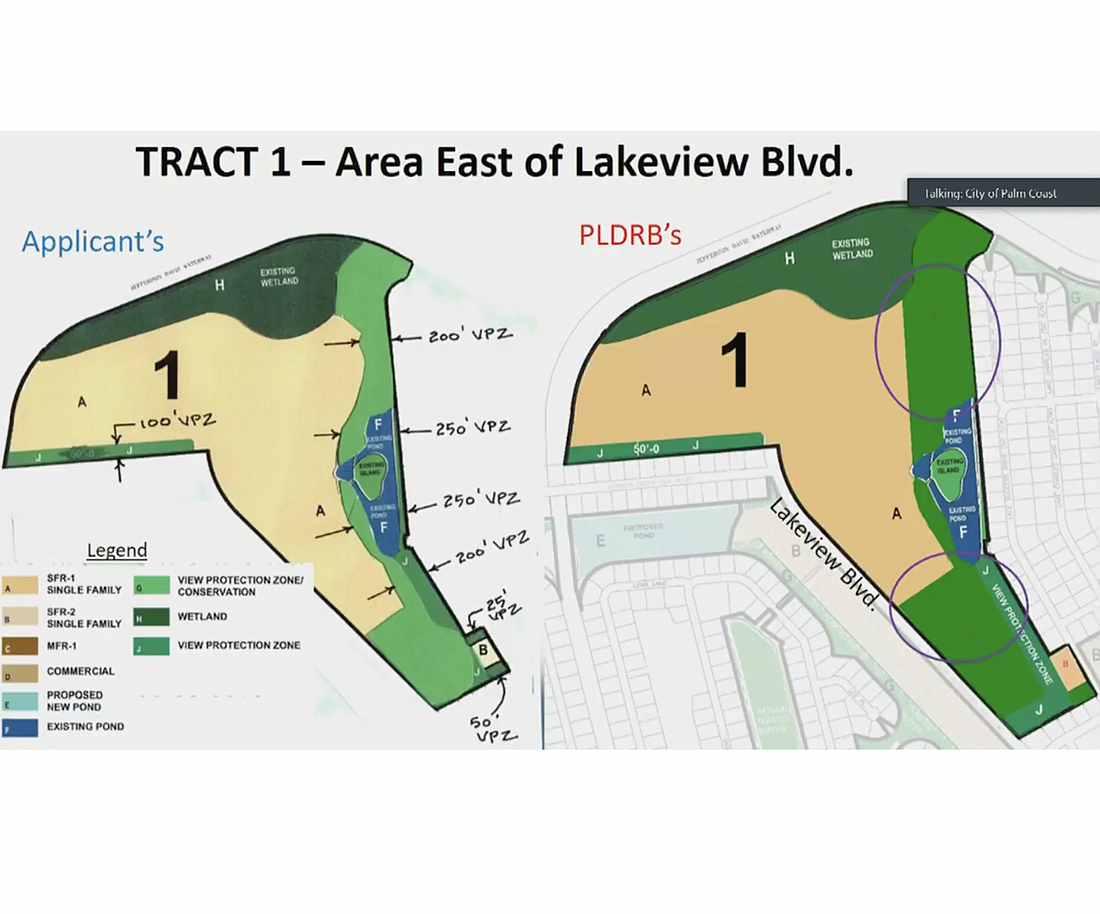- January 18, 2025
-
-
Loading

Loading

A proposed 268-home development on the former Matanzas Woods Golf Course property got the Palm Coast City Council's go-ahead in a split 3-2 vote the night of Jan. 5, but the approval also places limitations on the developer in order to protect existing residents' views.
The council, rather than approving the Lakeview Estates proposal as Matanzas GC Palm Coast LLC developer Alexander Ustilovsky had submitted it, opted instead to approve a variation favored by the city's staff and the Planning and Land Development Regulation Board, which sought broader buffers between the existing homes and the proposed new ones on several parcels of the 280.6-acre, 10-tract property.
A central sticking point in the city's negotiations with the developer had concerned what the city code calls "view protection zones," buffers designed to protect the views of residents who live in a golf course community.
The code doesn't specify the dimensions of the required zones. And Michael Chiumento, the attorney representing Ustilovsky, noted that the section of code that requires them refers to fairway views, while the Matanzas Woods Golf Course hasn't had anything that looks like a fairway for years. The course closed in 2007.
“This section that they are applying to tracts one or three is not real clear," Chiumento said. "It applies to a golf course, but this is not a golf course and never will be. .... There's no fairway; there's woods."
On tract one, the developer's proposal included 200-250-foot-wide buffers, while the planning board wanted 400; on Tract 3, the developer had proposed single-family homes separated from existing houses with a 100-foot view protection zone, while the planning board wanted the entire tract left uninhabited for view protection.
Some residents who spoke during the meeting's public comment period were unimpressed by a video simulation presented by Chiumento that showed an animated flyover of the proposed community next to the existing one.
"Smaller lots, houses jammed together — it doesn’t look right; it doesn’t belong here," resident Perry Mitrano said. "It’s a bad project."
Resident Diana Minottti said that when she drives into the existing community on Lakeview Drive, "I feel like I’m coming into a neighborhood, a community. ... Now, we’re not going to see that beautiful pasture; we’re going to see houses. Little houses."
She questioned the need for new homes, since there's residential development occurring elsewhere in Palm Coast.
"I bought into a golf course community, and I think it needs to remain that way, and I don’t think there is a need for all that housing," she said.
Before settling on a solution, the City Council repeatedly deadlocked.
After presentations about the history of the property and the development proposal, and public comments by area residents who largely opposed the development as a threat to their views and property values, Councilman Victor Barbosa made the first official motion of the night, proposing the council approve city staff’s preferred version. No one seconded.
Then, Barbosa suggested that the council table the matter and revisit it later.
"It looks like there’s a lot of questions and a lot of people that it’s going to be a hardship for them," Barbosa said.
But questions raised by residents about the project had already been answered at the meeting by city staff or by Chiumento, Mayor Milissa Holland pointed out.
No one seconded Barbosa's motion to table.
Councilman Nick Klufas motioned to approve the development as Ustilovsky had proposed it.
No one else on the council supported that, either.
Councilman Ed Danko motioned to approve the Planning Board's favored proposal. Again, no one seconded — at least, not yet.
"Well, we’ve exhausted all other options except for one," Holland said, referring to the option to deny the proposed development altogether. "Is there a motion?”
But the city attorney, Bill Reischmann, stepped in with a warning.
"[If] you expect me to defend that if there’s a court challenge, I’m going to need to specify ... the legal grounds" for the denial, he said.
The decision before the council was quasi-judicial. The council can't, under Florida law, baselessly deny a developer permission to build on his own land. It would have to provide a legally justifiable reason.
Holland handed over her gavel to the vice mayor and seconded Danko's motion to approve the planning board's version of the Lakeview project.
This time, it passed 3-2, with Danko, Holland and Klufas voting in favor, and Barbosa and Councilman Eddie Branquinho voting against.